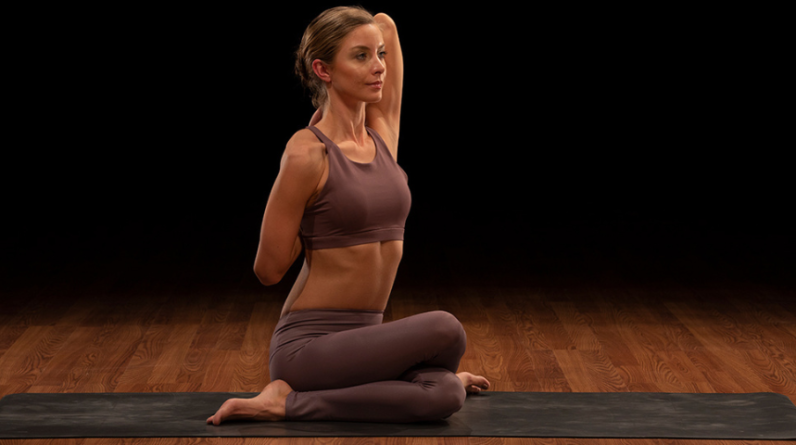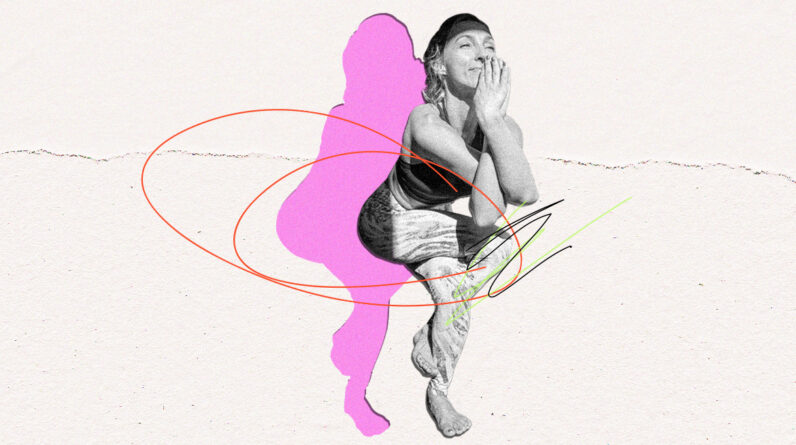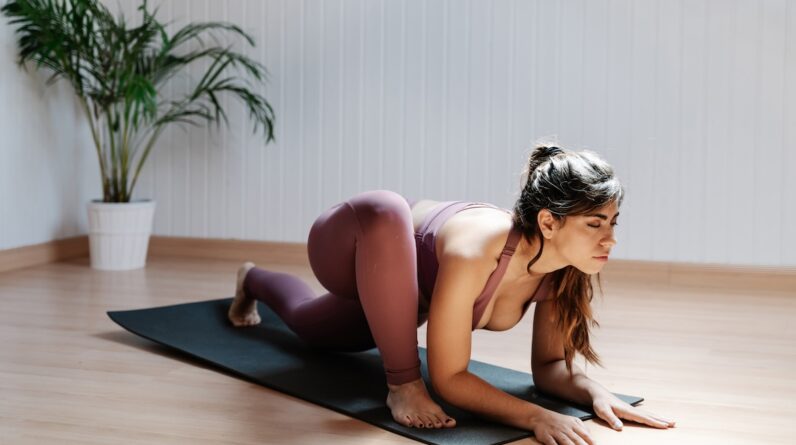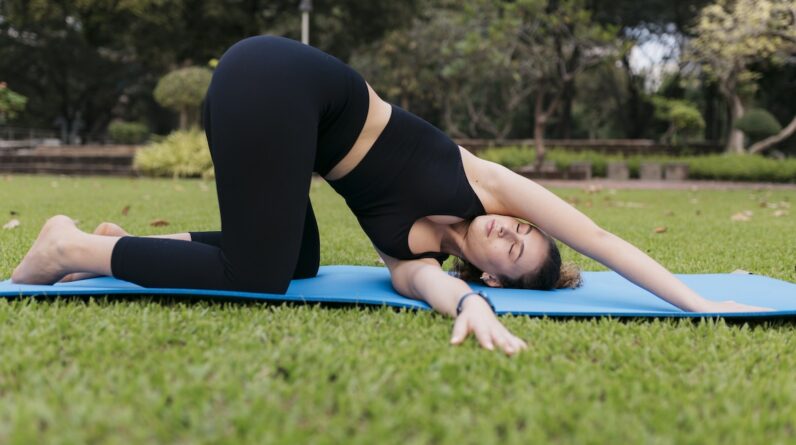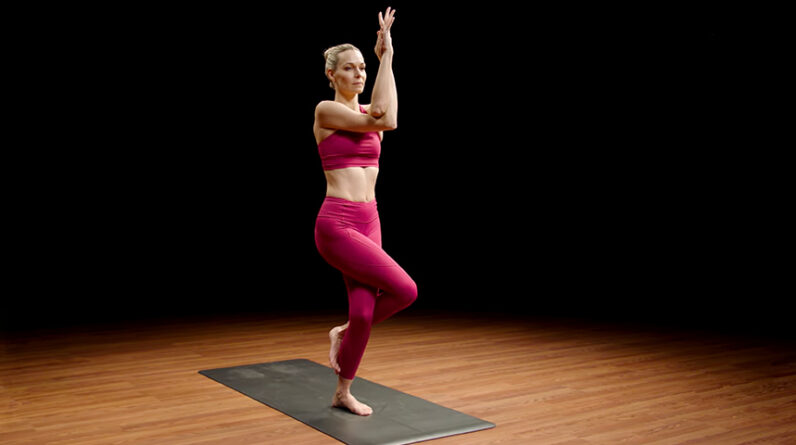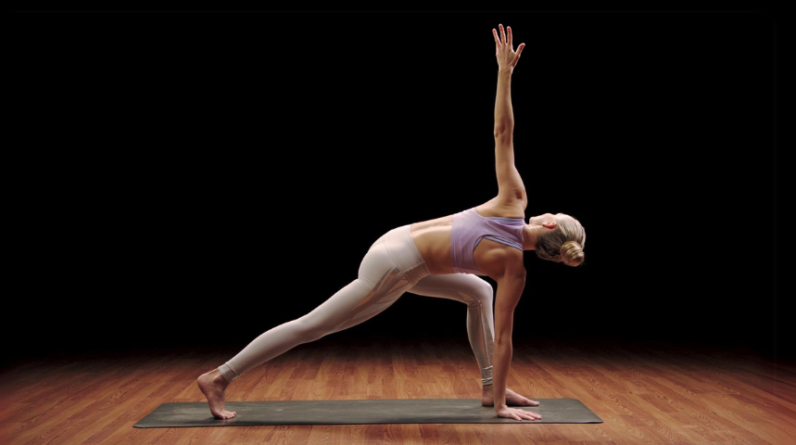
Although there are many outstanding stretches in a dynamic-warmup that can prepare you for a workout, only one holds the title of the “world’s greatest stretch.” That’s because this particular move hits multiple muscle groups and improves range of motion, which plays a underrated role in exercise performance and injury prevention.
The stretch pairs a lunge with a torso twist toward the bent front knee, along with outstretched arms — one on the floor, the other in the air — providing a blend of strength, balance, and released muscle tension.
Why Is It Called the World’s Greatest Stretch?
The world’s greatest stretch earned its name by engaging so many muscles simultaneously, explains strength and conditioning coach Reda Elmardi, CSCS.
“The world’s greatest stretch is highly regarded for its comprehensive approach within a single flow,” Elmardi says. “Its efficiency in targeting multiple muscle groups is a standout feature, as it addresses several key muscle groups crucial for overall mobility and flexibility.”
These key areas include the hamstrings, hip flexors, glutes, core, and shoulders. Even the feet get a stretch since the one behind you in a lunge will be in a heel-raised position, providing elongation in the foot muscles.
Not only does it help improve mobility, but it’s also a great addition to a dynamic warm-up. Before a workout, dynamic stretching helps the body get ready for specific movements and that can fire up the right muscles in a way that keep them protected even during intense workouts.
For example, a 2018 study in the Journal of Exercise Rehabilitation suggests that dynamic stretching increases the range of motion for joints, and that reduces the risk of injuries to muscles and tendons.
World’s Greatest Stretch: Step-by-Step Instructions
- Stand on a mat with your feet about hip-distance apart. With your knees slightly bent, bend forward at your waist and place your palms next to your feet.
- Step your right leg backward until you’re in a runner’s lunge position, with your left knee forward and bent at a 90-degree angle.
- Keeping your right hand on the mat (or on a yoga block), twist your torso to the left, opening up your chest toward your left leg and extending your left arm toward the ceiling with your palm facing to the left.
Tips for the World’s Greatest Stretch
Your approach to this stretch will depend on whether you’re using it as a dynamic or static stretch.
For dynamic stretching
When performing the world’s greatest stretch as part of a dynamic warm-up, you don’t need to hold each position for a long time, according to Elmardi.
“Instead, move smoothly through each part of the stretch for about three to five seconds per position, focusing on fluid movement rather than static holding,” he says. “This approach helps increase blood flow, warm up the muscles, and prepare your body for the workout ahead.”
For static stretching
After a workout, when you’re focusing more on improving flexibility and cooling down, you can hold each position of the world’s greatest stretch for a longer duration, he adds. That might mean 15 to 30 seconds per position.
“This allows your muscles to relax and stretch more deeply, aids in recovery, and helps improve overall flexibility,” says Elmardi. “Keep in mind that the ideal hold time can also vary based on individual flexibility and comfort levels. Adjust as needed to ensure the stretch feels beneficial, not painful.”
Benefits of the World’s Greatest Stretch
Because so many muscles are engaged at once, this stretch is a boon for active muscle recruitment and strength development, Elmardi says, but that’s not all. He says the stretch has more advantages to offer:
1. Enhances flexibility
By targeting multiple joints and muscle groups, you can improve overall flexibility and range of motion, which can contribute to better performance in physical activities and reduce the risk of injury, he says.
2. Promotes functional movement
The world’s greatest stretch includes elements that mimic real-life movements, such as lunges and twists, promoting functional flexibility that translates into everyday activities.
3. Increases blood flow
The dynamic nature of the stretch helps increase blood flow to the muscles, aiding in muscle recovery and reducing soreness.
4. Helps with body coordination
The complexity of the movements requires concentration and coordination, engaging the mind as well as the body, which can help improve overall body awareness.
Mistakes to Avoid During the World’s Greatest Stretch
Although the stretch might seem simple and straightforward, Elmardi suggests focusing on form at every step. Here are some common mistakes to avoid:
- Rushing through the movements: Given its dynamic nature, moving too quickly can lead to improper form and reduce the effectiveness of the stretch.
- Improper alignment: In the lunge position, make sure your front knee is directly over your ankle, not extending past your toes. This will help you avoid excess strain on the knee. Also, aim to keep the hips square to the front, which can help maintain balance and ensure the stretch targets the intended muscles.
- Not engaging the core: Failing to engage your core throughout the stretch can lead to lower back strain, especially during the twist and reach portions. Along with aiding stability, a strong, engaged core helps support the spine.
- Overextending during the twist: When performing the twist portion, be careful not to over rotate, which can strain the back. The twist should come from the thoracic spine (upper and mid-back) rather than the lower back.
- Skipping breathing: Not breathing properly can create tension in your muscles, making them less receptive to stretching. Deep, controlled breaths can help deepen the stretch and increase relaxation.
- Pushing yourself too far: “Most of all, listen to your body, particularly if you’re experiencing pain,” says Elmardi. “Pain beyond mild discomfort is a sign that something may be wrong, and pushing through pain can lead to injury. If this is happening, adjust the stretch or seek professional advice if something feels off.”
How to Make the World’s Greatest Stretch Easier
If you’re new to the world’s greatest stretch, you may want to explore modifications that can let you build up to the full pose gradually. Elmardi suggests these as a starting point:
- Put the back knee down: For the lunge portion of the stretch, placing the back knee on the ground can reduce the intensity and help maintain balance. This is particularly helpful if you find it challenging to balance or if you’re experiencing discomfort in your back leg.
- Use props: Incorporating props like yoga blocks or a chair can offer support and stability. For example, if reaching the ground is difficult in the forward fold or the twist, place your hands on blocks or a sturdy chair to reduce the stretch intensity and help with balance.
- Reduce the range of motion: You don’t have to go as deep into each part of the stretch. Adjust the depth of your lunge or the extent of your twist to a level that feels comfortable and manageable for you.
- Skip the twist: If the twisting part of the stretch is too challenging or uncomfortable, especially for those with lower back issues, you can skip it initially. Focus on the lunge and hamstring stretch components to build up your flexibility and strength gradually.
- Hand on hip for the twist: If extending the arm overhead during the twist is too intense, you can place your hand on your hip instead. This modification still encourages thoracic (upper back) rotation without the added challenge of arm extension.


